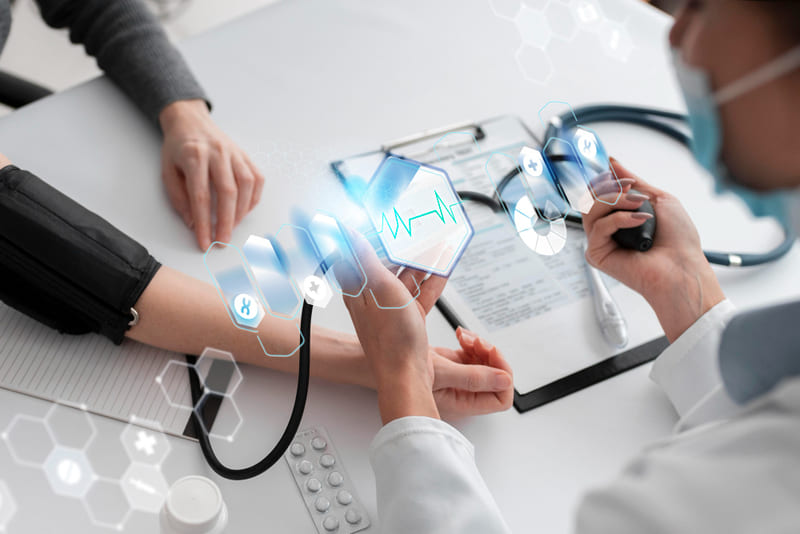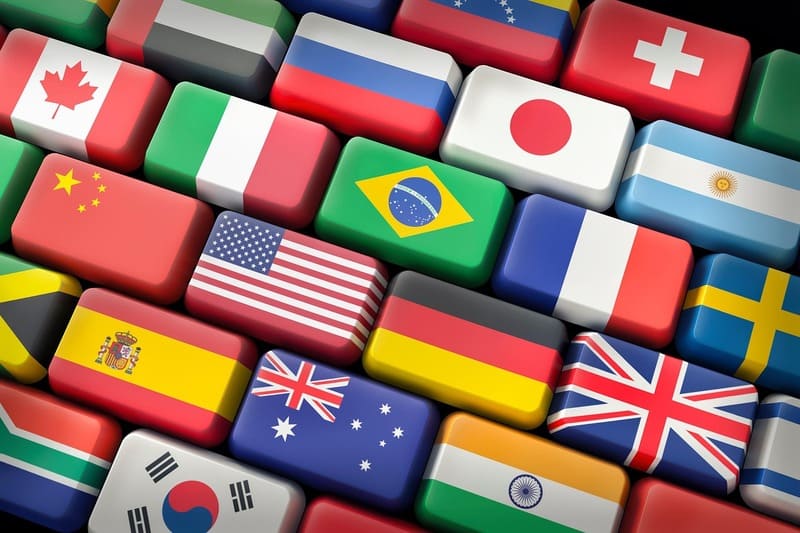In the era of globalization, users of healthcare services, such as hospitals or clinics, can be very diverse. Patients may come from different countries with different backgrounds and languages. One effort to provide quality and inclusive healthcare services is through medical documents that are easily understood by patients. Some medical documents include clinical test results, patient records, research papers, and medical instructions. Given the ease with which people can seek treatment abroad, accurate and precise medical translation services are essential.
The goal of medical translation is to bridge the communication gap between healthcare professionals and patients. In addition to medical treatment, the translation of medical documents also supports global collaboration in research. However, the process of translating medical documents differs significantly from translating ordinary documents. A small error in the translation of medical instructions can have a major impact. This is because every word in a medical document can have life-or-death consequences.
Imagine if a post-operative patient received a translated instruction saying ‘Do strenuous activity for two weeks’ when the original instruction was ‘Avoid strenuous activity for two weeks’. This could cause the patient’s surgical wound to reopen or become infected.. The translation of medical documents, such as consent forms or discharge summaries, can also help patients understand medical procedures and make informed decisions based on clear information.
The Hidden Complexity Behind Medical Documents
Behind the information presented about your health, medical documents contain complexities that most patients are unaware of. This complexity stems from the nature of the data itself. Data from medical documents is often inconsistent, unstructured, and highly varied. In addition, rapidly changing technology in healthcare systems and administrative requirements also contribute to this complexity. This certainly affects every aspect of medical practice, including billing, compliance, diagnosis, and patient safety.
To understand the hidden complexities of medical documents, here is a further explanation.
1. Unstructured data
Doctors’ narrative notes are rich in valuable information. format, some information such as medical jargon, acronyms, or abbreviations are often difficult for the system to understand, even for other healthcare providers.
2. Documentation that is not integrated with data and is inconsistent
The lack of standardization in the use of formats makes it difficult to integrate data with other patient records. In addition, the frequent changes in the definition of medical conditions make it difficult to document and analyze consistently.
3. Regulatory and administrative burdens
Human error during manual data entry can have serious consequences. Furthermore, non-compliance in billing processes can result in rejected claims and penalties.
Beyond Words: The Human Side of Medical Translation
The process of medical document translation is not simply converting a word, sentence, or paragraph from one language to another. A translator must have empathy for patients and sensitivity to their culture. This human-centered aspect makes the role of human translators irreplaceable, even though the use of Artificial Intelligence (AI) is inevitable.
Here is an explanation of the importance of using human translators.
1. Sensitivity to patients
Human medical translators are sensitive to each patient’s specific needs. They can adjust their communication style to suit each patient’s characteristics and condition. For example, not all patients understand the term ‘anticoagulant.’ Therefore, translators will replace this medical term with an easier term, namely blood thinner. By using an easier term, patients will understand their condition and the treatment they need.
Furthermore, human medical interpreters can adapt to the patient’s condition and situation. For example, the patient may be elderly or disabled. Communicating with patients like this requires a different approach. To ensure that the message is conveyed easily, the interpreter will use simple, clear language and add visuals or additional explanations if necessary. Meanwhile, patients who have just received a serious diagnosis or are anxious need reassuring language.
2. Understanding the patient’s cultural context
A key strength of human medical interpreters is their ability to adapt culturally during interpretation. This means that interpreters can adapt the style of medical communication to the patient’s cultural background. However, this style of communication does not change the actual meaning.
For example, some cultures consider discussions about death or serious illness to be taboo. Interpreters will choose a more subtle way of communicating without reducing the clinical meaning. Another example is that some cultures consider mental illness to be a spiritual problem. Interpreters will choose neutral terms that are more acceptable to patients.
Accuracy Is Everything: The Cost of Getting It Wrong
Accuracy in medical document translation is absolutely critical. Inaccurate translations can undermine customer trust, damage reputation, and even lead to errors in strategic decision-making.
For further clarification, let us discuss the risks involved.
1. Risks due to incorrect translation of dosages
Errors in translating medication dosages will cause side effects in patients. If the translated dosage is too low, it will prevent the patient from improving or even cause their condition to worsen. This occurs because the administered dosage is ineffective. Conversely, translating a dosage that is too high will cause the patient to overdose or become poisoned. An overdose of medication can cause side effects, such as organ damage or even death.
2. Risks due to incorrect translation of symptoms
Inaccurate translation of symptoms will lead to misdiagnosis. This error will result in incorrect treatment or medication. For example, a patient with congenital heart disease may be given lung medication. This will certainly cause new health problems for the patient.
3. Risks due to incorrect translation of medical instructions
Incorrect translation of medical instructions will worsen the patient’s health. For example, the original instruction states once a day, but it is translated as twice a day. This will cause the patient to overdose.
These risks must be prevented to avoid medical malpractice and potential legal consequences. The World Health Organization (WHO) states that medication errors are one of the main causes of injury or harm. One example is in the United States, where medication errors result in at least one death and injure approximately 1.3 million people each year.
The Tech Shift: AI and Digital Tools in Medical Translation
Currently, the use of AI is inevitable, including in the process of medical document translation. Although professional medical translators still play a central role, AI greatly helps to increase the speed and quality of medical translation. Considering the volume of documents and the need for fast translation, the role of AI cannot be underestimated.
AI in medical translation focuses on Natural Language Processing (NLP). This system enables AI to understand, interpret, and generate human language. Advances in algorithms have enabled AI to understand various fields, one of which is medicine.
Moreover, AI powered by machine learning has been developed to handle the complexity of medical translation. This type of AI can translate with both linguistic and medical accuracy. In addition, AI can also analyze medical texts and medical terms. Furthermore, AI can process large amounts of medical data, thereby improving understanding of specific medical terminology.
Although AI can speed up the work of translators, it lacks sensitivity and understanding of the cultural nuances of the target country. The current translation process must be balanced; it cannot be one-sided, relying too much on AI or not utilizing AI at all. Over-reliance on AI makes translations rigid and less empathetic toward patients. For example, AI would not be able to determine that patient A is an elderly person who needs simpler explanations. AI would also not know that there are terms that are easier for patient B to understand than the diagnosis of meningitis.
Trust, Compliance, and the Future of Global Healthcare
In this global era, compliance with international regulations is essential. Moreover, trust and compliance are the main pillars that determine the effectiveness and sustainability of the healthcare system. Trust is fundamental in healthcare, whether between patients and practitioners, institutions, or even nations. If you are a patient at a hospital and trust the treatment there, you will be happy to provide your health information and comply with the treatment plan. You will also be happy with their services.
On a broader scale, public trust in the healthcare system provided by the government is impacted by compliance with the government. Meanwhile, government agencies ensure public compliance with health programs such as vaccination drives and emergency response initiatives.. Similarly, international regulatory compliance aims to maintain ethical standards, patient safety, and strengthen global collaboration. One of the applicable international regulations is the International Health Regulations (IHR). This regulation plays a role in enabling countries to detect and respond to public health threats.
With the development of technology, the use of AI and telemedicine has become inseparable from healthcare practices. However, the implementation of trust and compliance has become very complex. Some of the compliance measures that need to be implemented are transparent communication, ethical supervision, and robust data management. Currently, healthcare services and technological advances are intertwined. However, trust and compliance with international regulations must still be upheld. This includes medical document translation, which must not violate international regulations.
Final Thoughts: Translating More Than Words
Medical translation is not just about translating words, but about effectively conveying the information contained in medical documents to patients. The translation process cannot be carried out by random translators. This process requires collaboration with professional medical translators who are experienced and trained in healthcare communication. This is because translating medical documents requires a deep understanding of specific medical terminology, sensitivity to the language and culture of the patient.
Moreover, medical errors resulting from translation will harm patients, healthcare workers, and healthcare facilities themselves. Hence, choose an experienced and accredited partner such as SpeeQual. At SpeeQual, we have a team of experienced professional medical translators who are ready to assist you in translating your medical documents. Our use of CAT technology also ensures greater efficiency, consistency, and accuracy, so the translation results are more accurate and faster.
Thus, consult us immediately for your medical document translation!





